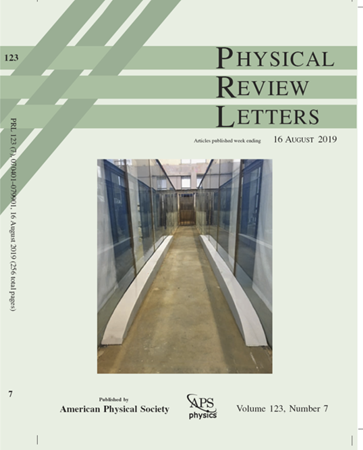首次使用磁悬浮粒子搜索超轻暗物质
IF 8.1
1区 物理与天体物理
Q1 PHYSICS, MULTIDISCIPLINARY
引用次数: 0
摘要
我们首次使用磁悬浮粒子搜索超轻暗物质。一个亚毫米永磁体悬浮在超导阱中,测得力灵敏度为0.2fN/Hz。我们没有发现信号存在的证据,并推导出暗物质在质量范围(1.10360−1.10485)×10−13 eV/c2内与重子和轻子数之差耦合的极限。我们对耦合强度的最严格限制是gB−L > 2.98×10−21。我们提出了POLONAISE(利用悬浮物体探测振荡,用于寻找奇异物理的新型加速度测量)实验,该实验具有短期、中期和长期的升级,将为我们提供广泛质量范围内的领先灵敏度,展示了这种新型量子传感技术在寻找暗物质方面的前景。2025年由美国物理学会出版本文章由计算机程序翻译,如有差异,请以英文原文为准。
First Search for Ultralight Dark Matter Using a Magnetically Levitated Particle
We perform the first search for ultralight dark matter using a magnetically levitated particle. A submillimeter permanent magnet is levitated in a superconducting trap with a measured force sensitivity of 0.2fN/Hz. We find no evidence of a signal and derive limits on dark matter coupled to the difference between baryon and lepton number, B − L ( 1.10360 − 1.10485 ) × 10 − 13 eV / c 2 g B − L ≲ 2.98 × 10 − 21 Published by the American Physical Society 2025
求助全文
通过发布文献求助,成功后即可免费获取论文全文。
去求助
来源期刊

Physical review letters
物理-物理:综合
CiteScore
16.50
自引率
7.00%
发文量
2673
审稿时长
2.2 months
期刊介绍:
Physical review letters(PRL)covers the full range of applied, fundamental, and interdisciplinary physics research topics:
General physics, including statistical and quantum mechanics and quantum information
Gravitation, astrophysics, and cosmology
Elementary particles and fields
Nuclear physics
Atomic, molecular, and optical physics
Nonlinear dynamics, fluid dynamics, and classical optics
Plasma and beam physics
Condensed matter and materials physics
Polymers, soft matter, biological, climate and interdisciplinary physics, including networks
 求助内容:
求助内容: 应助结果提醒方式:
应助结果提醒方式:


